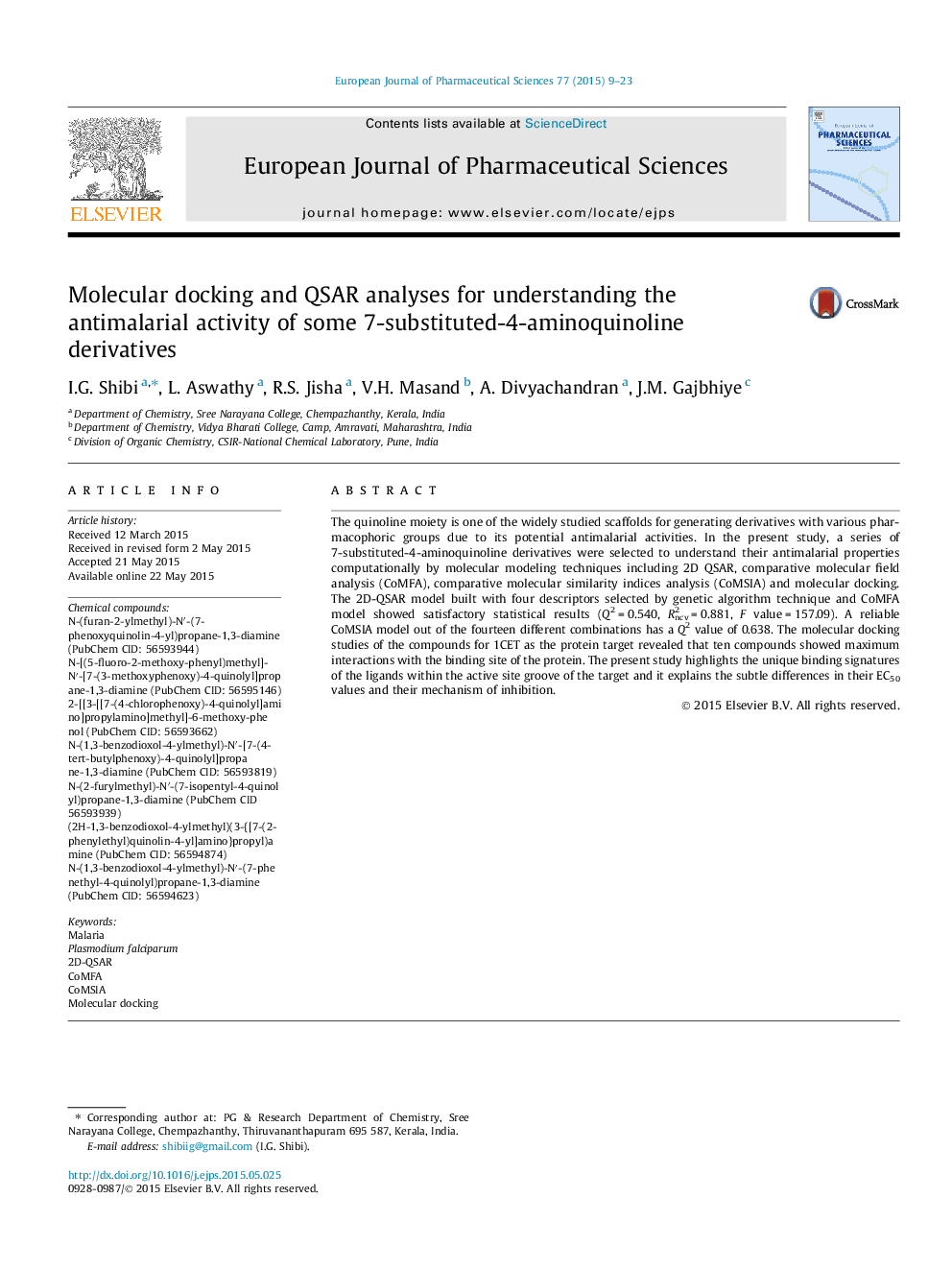| Article ID | Journal | Published Year | Pages | File Type |
|---|---|---|---|---|
| 2480256 | European Journal of Pharmaceutical Sciences | 2015 | 15 Pages |
The quinoline moiety is one of the widely studied scaffolds for generating derivatives with various pharmacophoric groups due to its potential antimalarial activities. In the present study, a series of 7-substituted-4-aminoquinoline derivatives were selected to understand their antimalarial properties computationally by molecular modeling techniques including 2D QSAR, comparative molecular field analysis (CoMFA), comparative molecular similarity indices analysis (CoMSIA) and molecular docking. The 2D-QSAR model built with four descriptors selected by genetic algorithm technique and CoMFA model showed satisfactory statistical results (Q2 = 0.540, R2ncv = 0.881, F value = 157.09). A reliable CoMSIA model out of the fourteen different combinations has a Q2 value of 0.638. The molecular docking studies of the compounds for 1CET as the protein target revealed that ten compounds showed maximum interactions with the binding site of the protein. The present study highlights the unique binding signatures of the ligands within the active site groove of the target and it explains the subtle differences in their EC50 values and their mechanism of inhibition.
Graphical abstractFigure optionsDownload full-size imageDownload high-quality image (192 K)Download as PowerPoint slide
